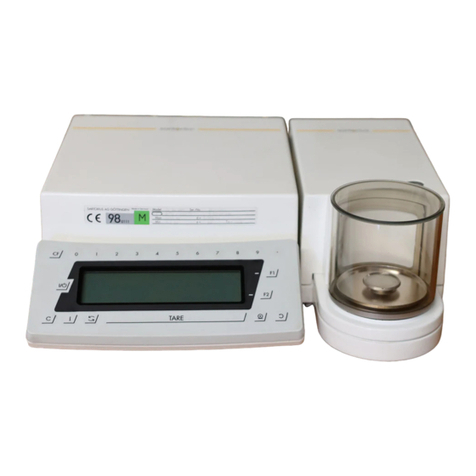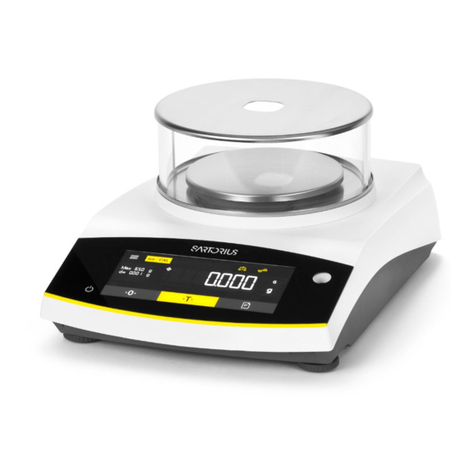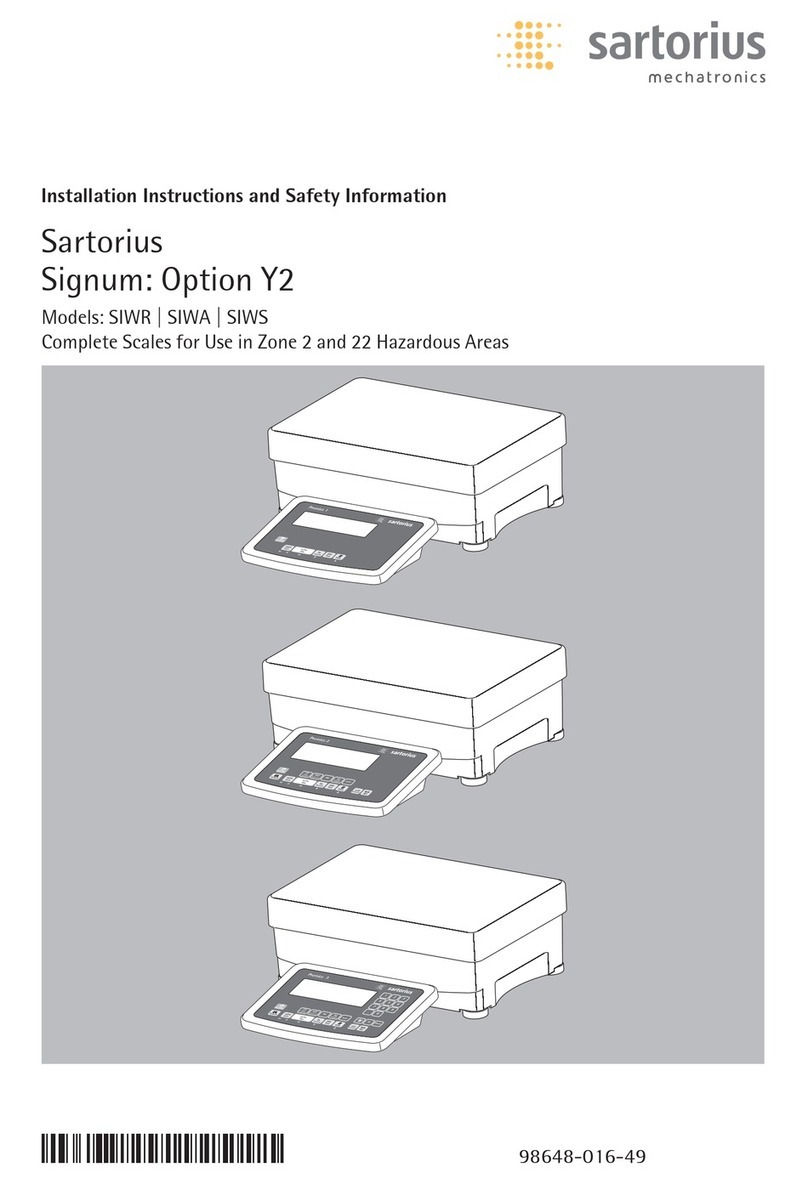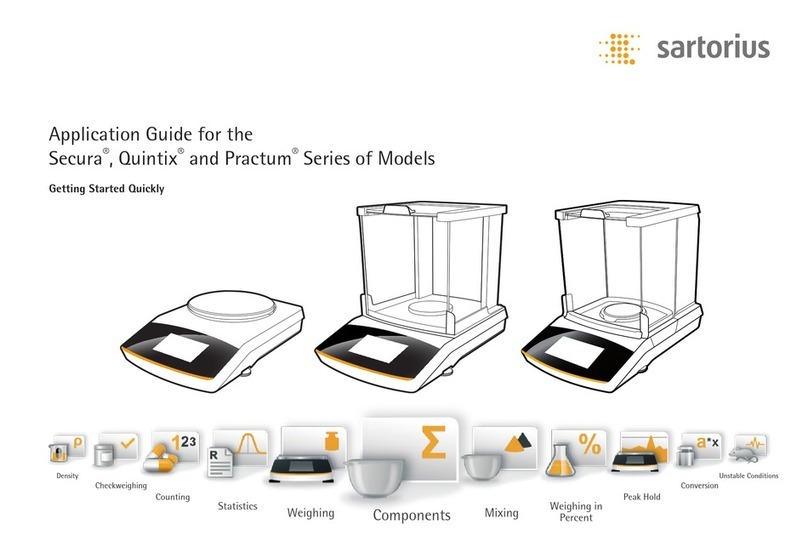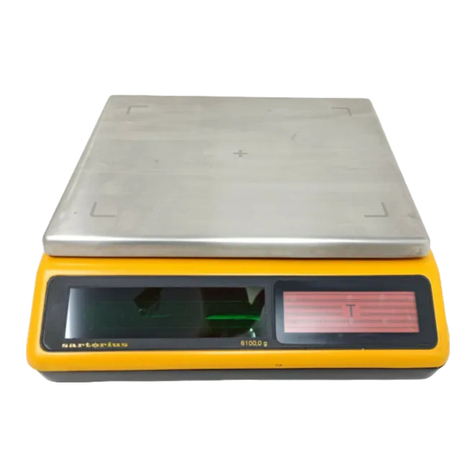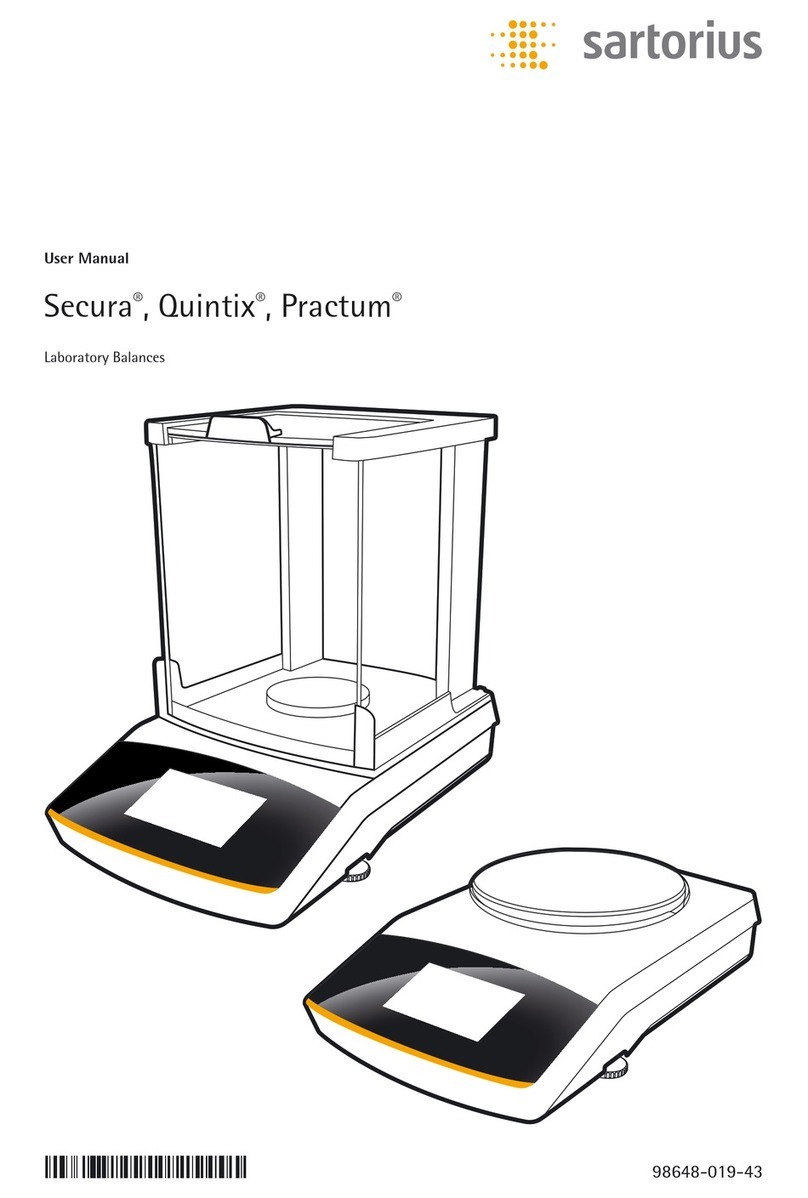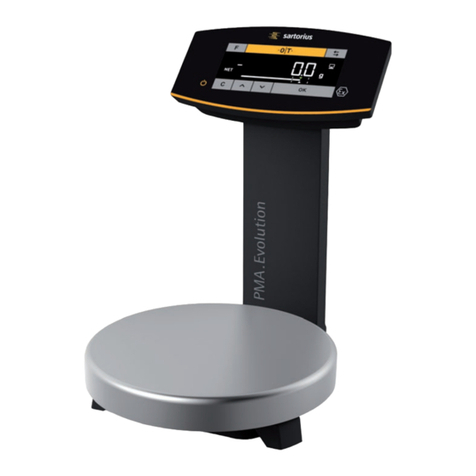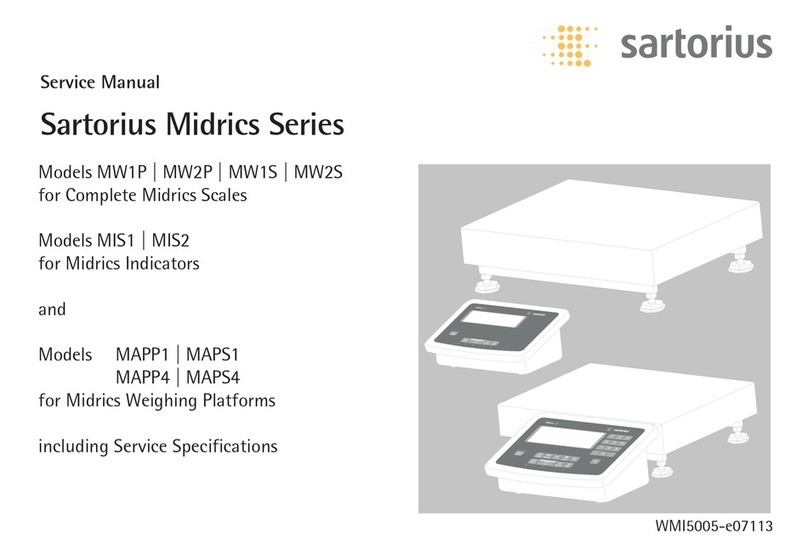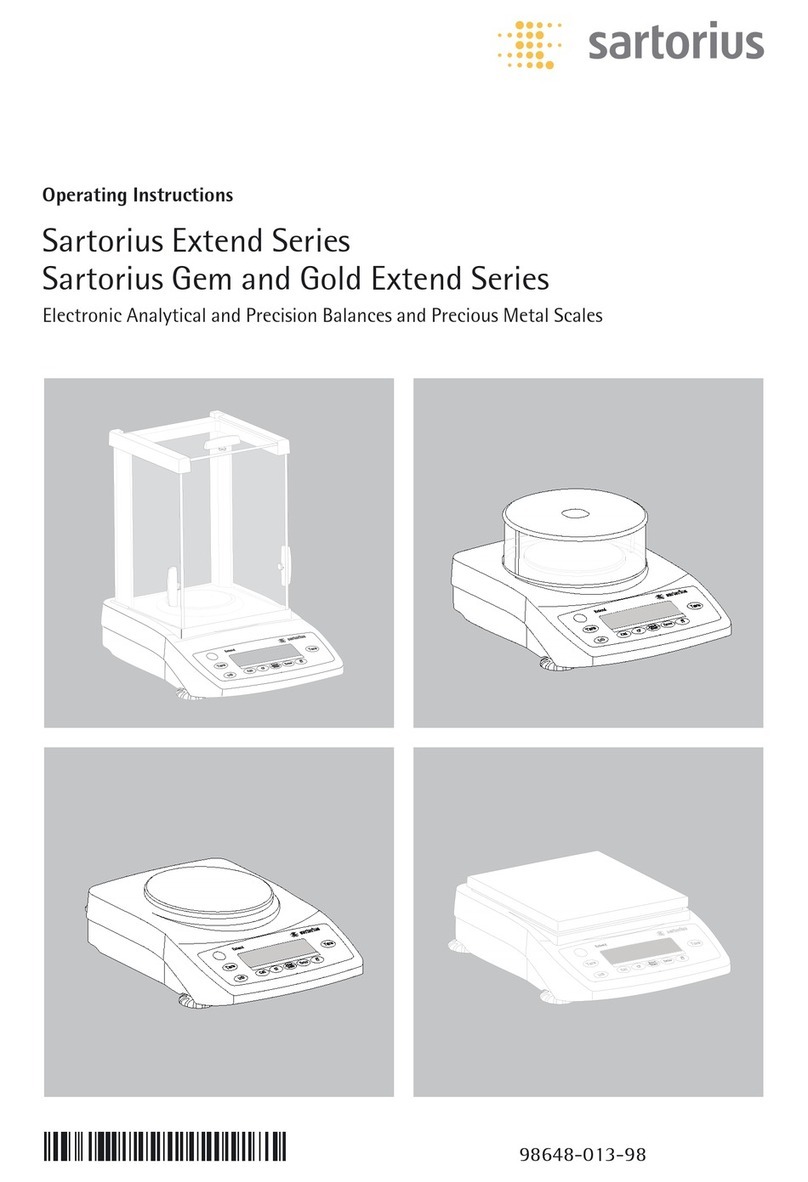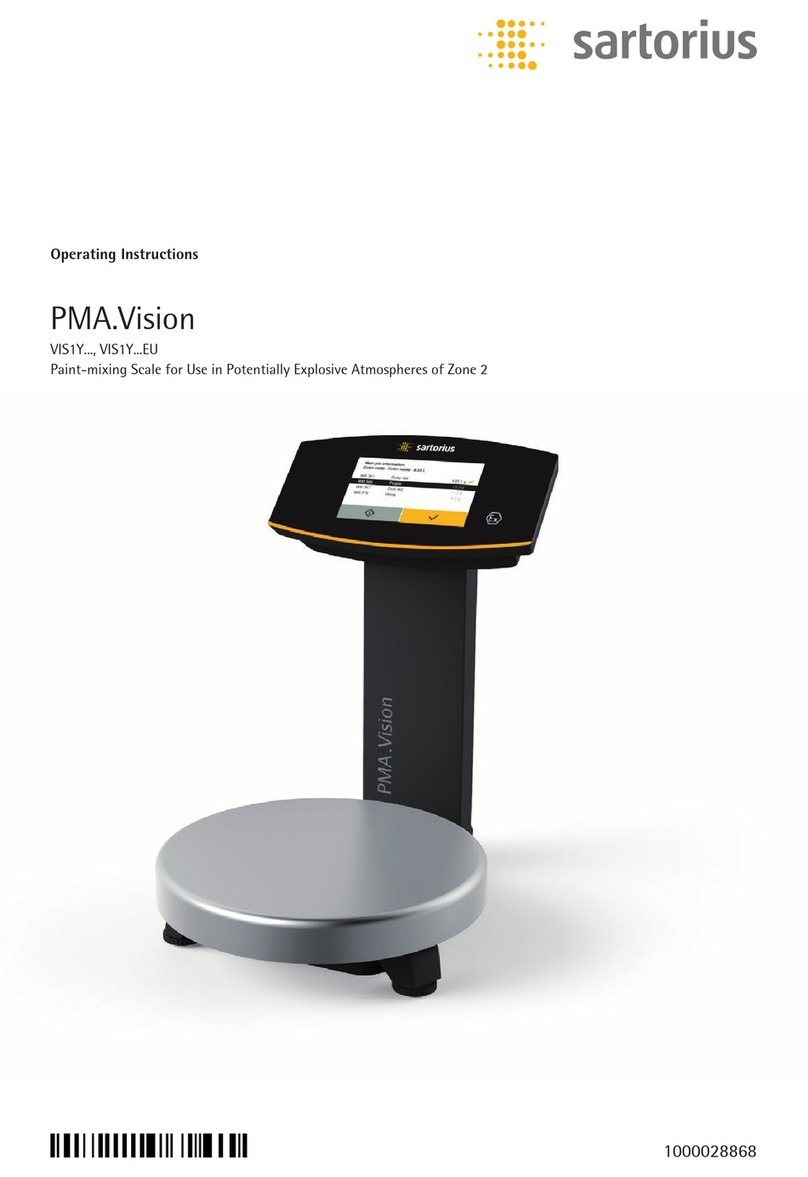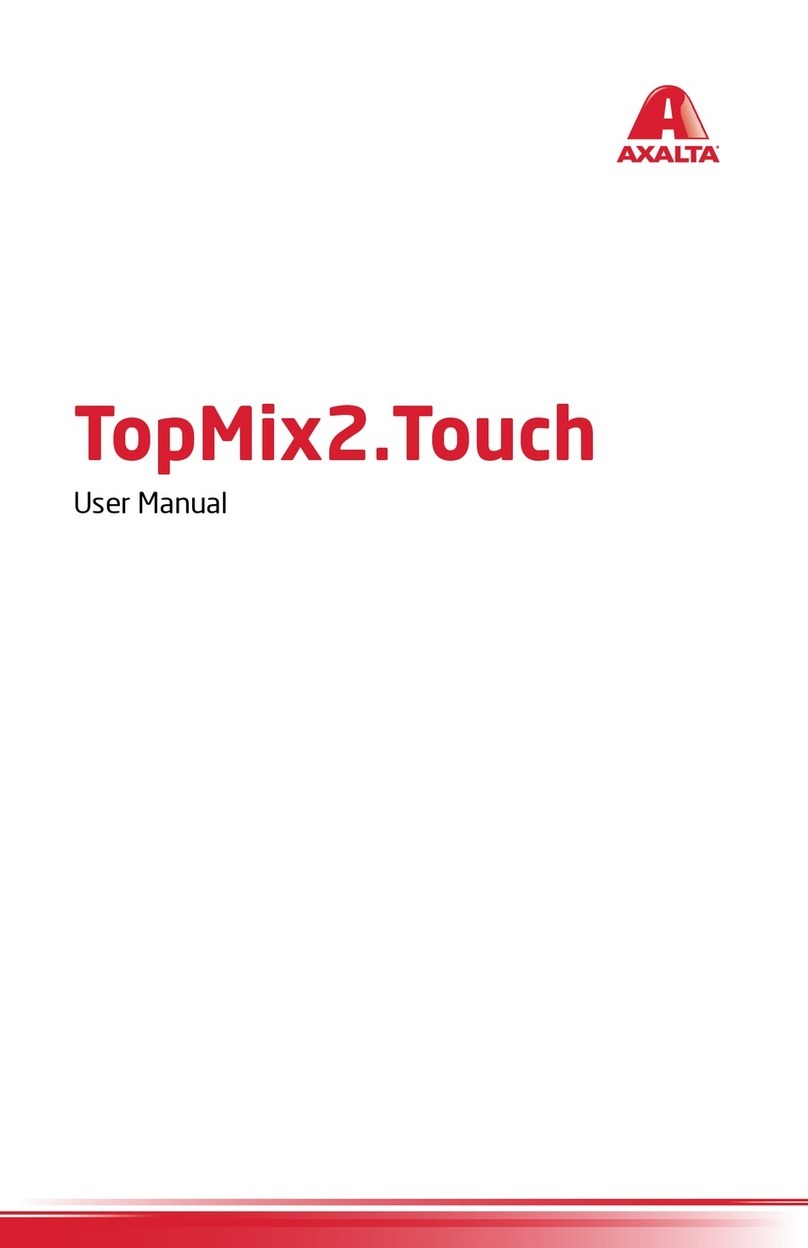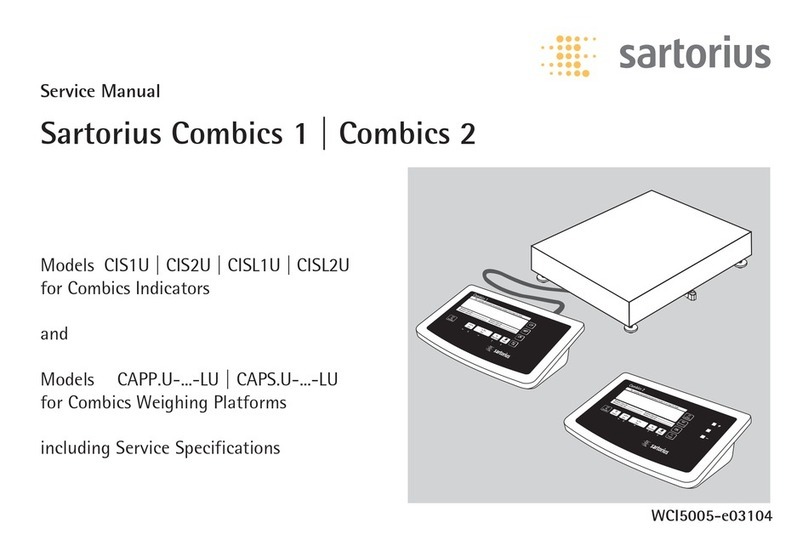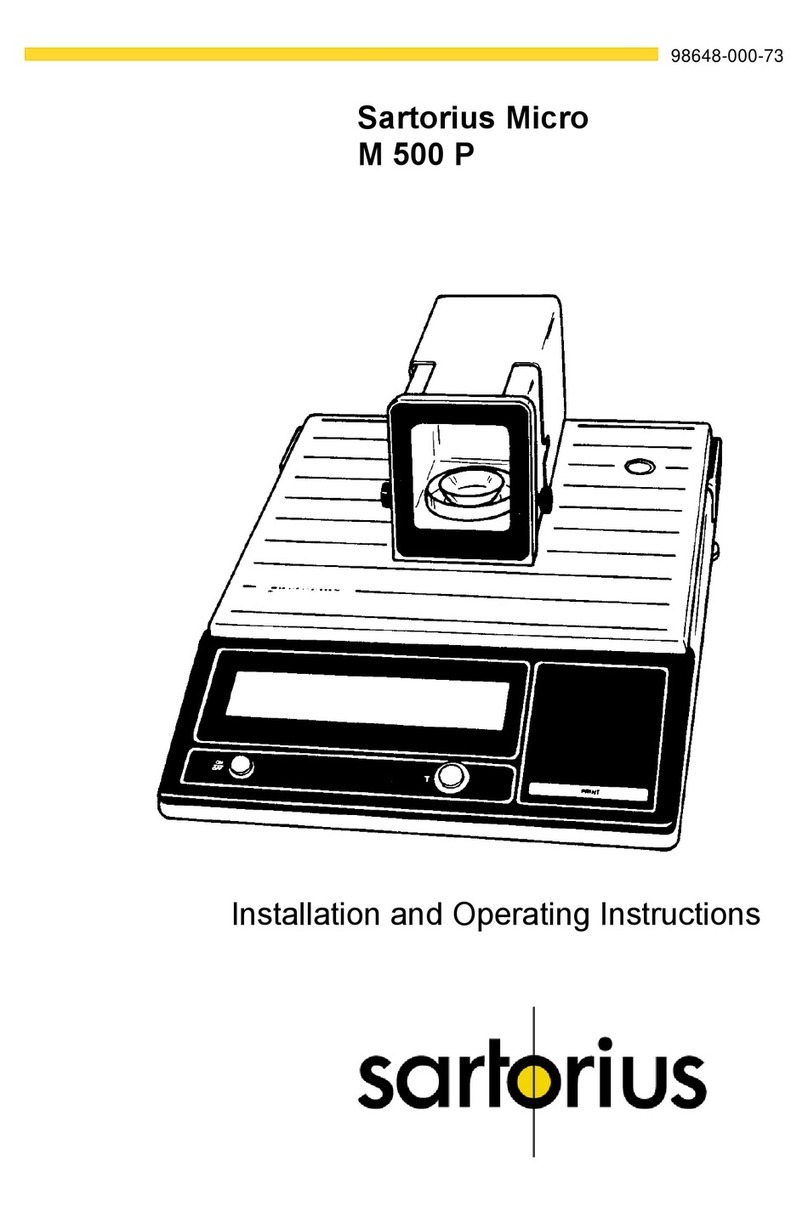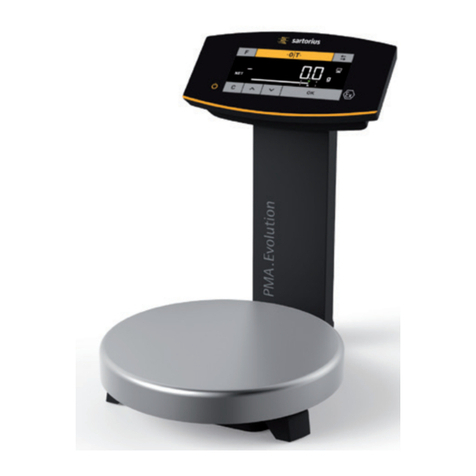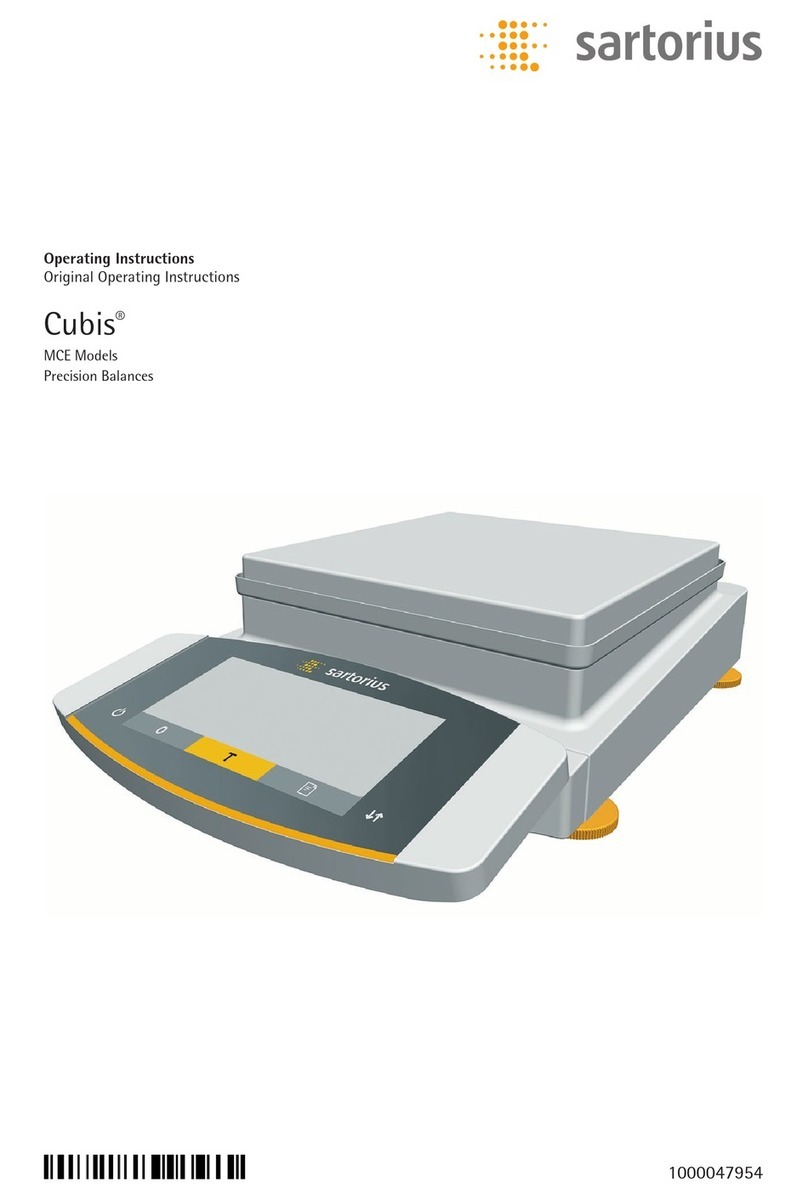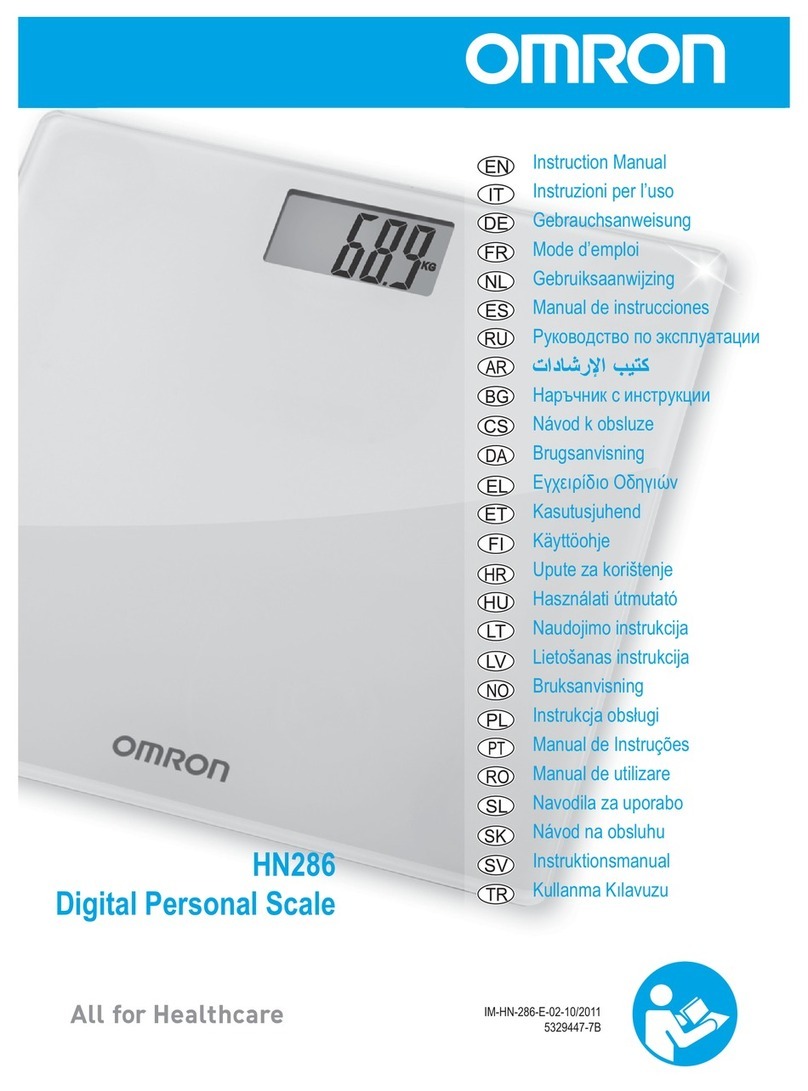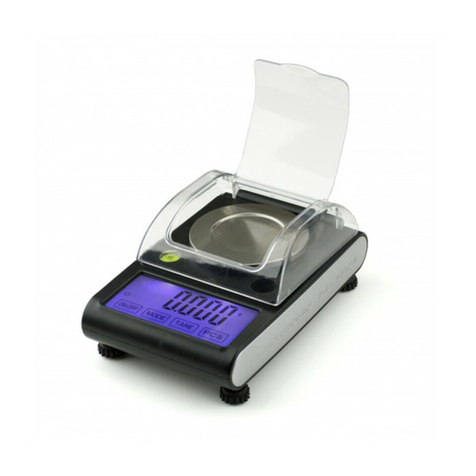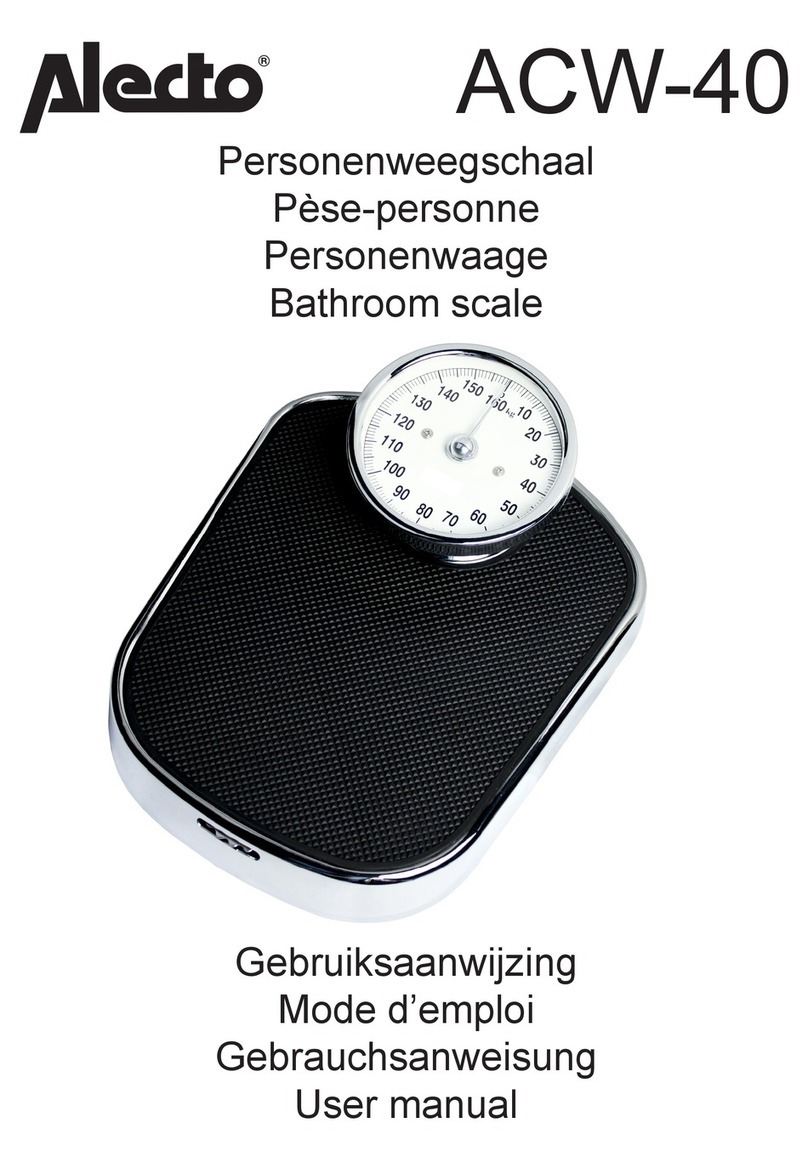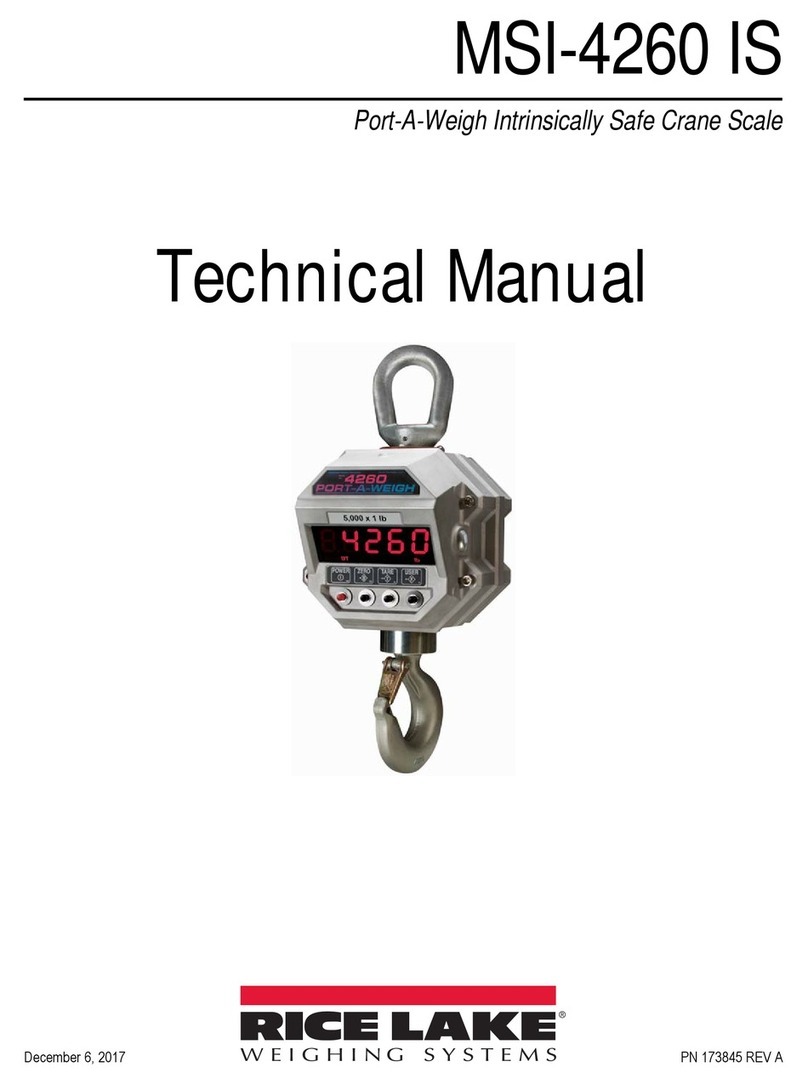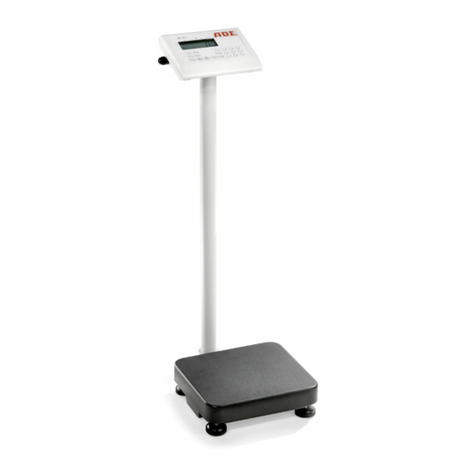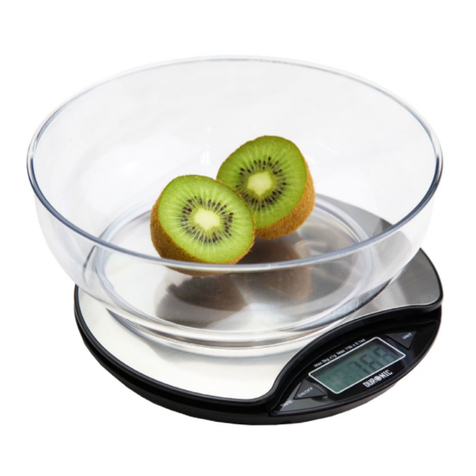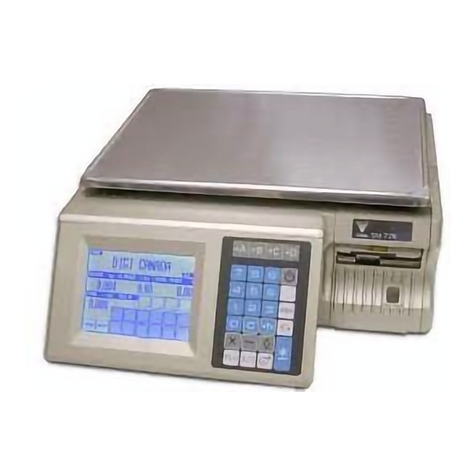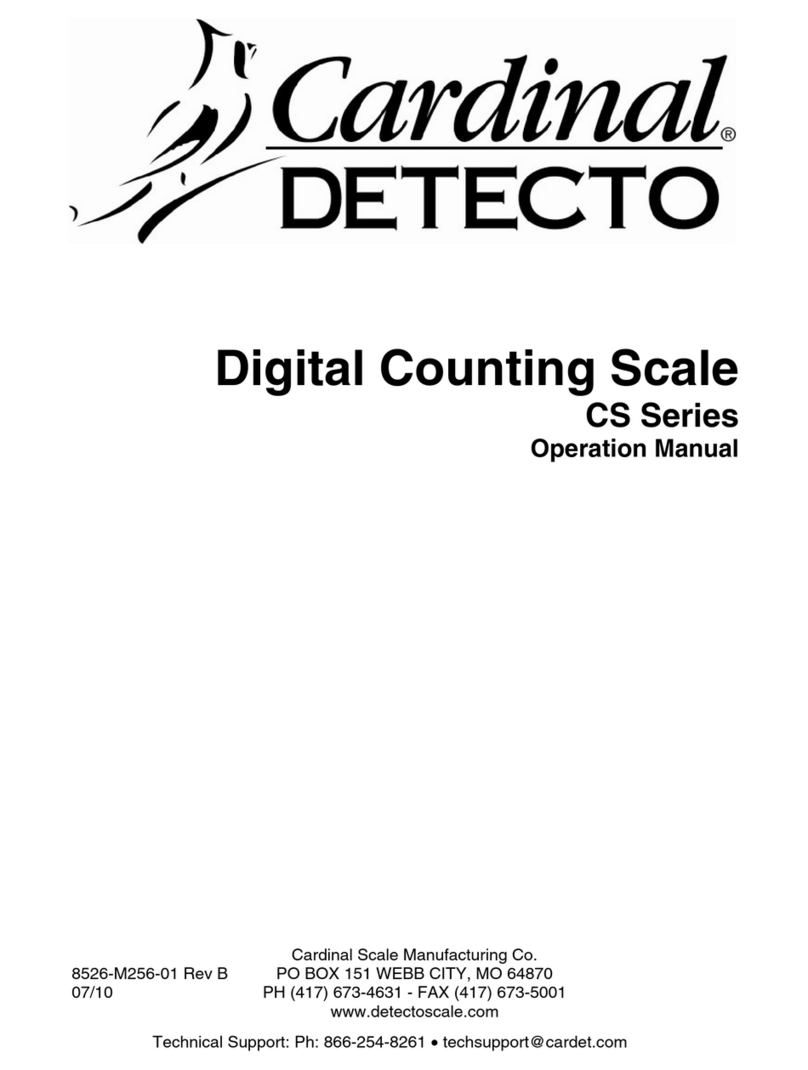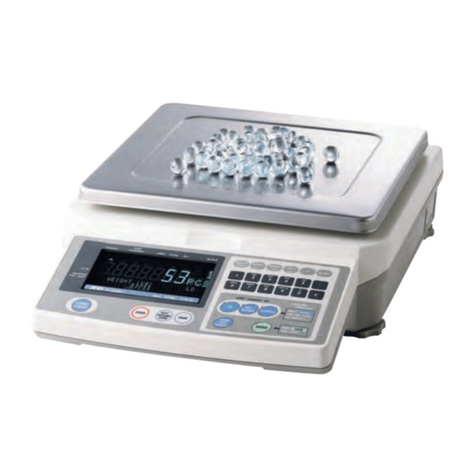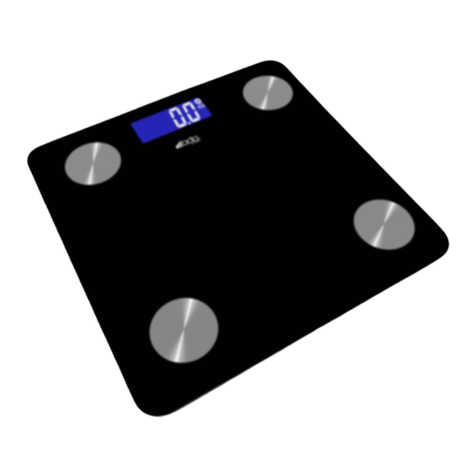8
Installation Instructions
Ambient Conditions
Microbalances are highly precise and very sensitive measuring
Instruments. Therefore, please choose a suitable place to set
up your balance. lt should not be exposed to the following:
- Heat radiation
- Aggressive/corrosive substances
- Vibrations
- Drafts
Use a balance table or a wall console (see "Accessories") to set
up your balance.
lf you wish to move your balance to another location,
please follow the directions on page 23 under "Transport-
ing the Balance."
Do not expose the balance to extreme moisture over long peri-
ods. Moisture in the air can condense on the surfaces of the
balance whenever a cold balance is brought to a substantially
warmer place.
lf you need to transfer the balance to a warmer area, make sure
to condition it for a few hours at room temperature. The best
way to prevent moisture condensation is to leave the balance
connected to line power. The components used in the balance
are rated to at least class KSF according to DIN 40040.
Your Sartorius Balance will provide accurate readouts even
when it is exposed to unfavorable ambient conditions.
You can adapt the balance to your requirements simply by
changing the menu code settings in the balance operating pro-
gram.
For this purpose, read pages 19 through 21
Connecting Electronic Devices (Peripherals)
Turn off the balance by pressing the ON/OFF key (8)
(STANDBY state), and wait until the weighing system of the
balance has been arrested automatically for transportation (see
also "Transporting the Balance" on page 23). Unplug the power
supply before you connect or disconnect devices to or from the
interface ports.
To reduce distortion of the weight readouts caused by ambient
conditions (turbulence within the weighing chamber, for exam-
ple), balance-generated data should be allowed to stabilize for
about 10 seconds before they are transmitted to an online
printer or other peripheral device.
